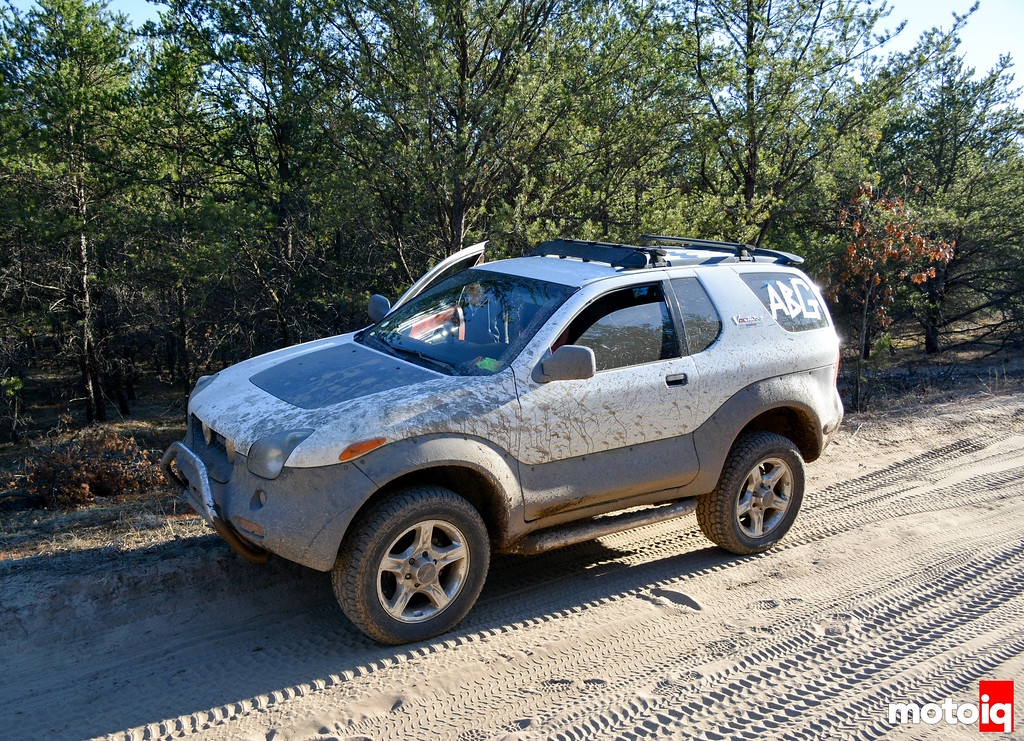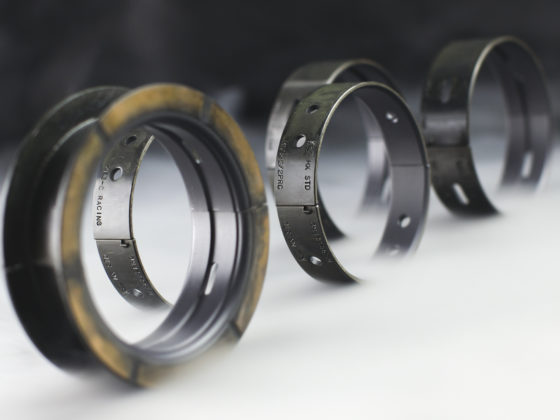 The new I4X lines drop right into place without a fuss. Not only are they shiny, new, and stainless steel, but I4X also includes new clips and crush washers ensuring a leak-free system.
The new I4X lines drop right into place without a fuss. Not only are they shiny, new, and stainless steel, but I4X also includes new clips and crush washers ensuring a leak-free system.
 By far the hardest line to install was the line from the chassis to the rear axle. Getting the axle side installed wasn’t too bad, but working around the axle itself to attach this line to the chassis was really tough. It’s in an awkward location with a number of suspension parts in the way. It’s especially tough if you’re doing this on the floor and not on a lift! Trying to partially sit up while under the truck and work above your head is awkward to say the least.
By far the hardest line to install was the line from the chassis to the rear axle. Getting the axle side installed wasn’t too bad, but working around the axle itself to attach this line to the chassis was really tough. It’s in an awkward location with a number of suspension parts in the way. It’s especially tough if you’re doing this on the floor and not on a lift! Trying to partially sit up while under the truck and work above your head is awkward to say the least.
 Fortunately the front lines are a lot easier to manage. They pop right in with no trouble.
Fortunately the front lines are a lot easier to manage. They pop right in with no trouble.
 With all of our new parts installed, it’s time to bleed the brakes. We knew the brake fluid was really old, so we decided to do a complete flush of the system. We’re glad we did, as this is definitely not the color brake fluid should be! Since this is a daily driver that never has its brakes pushed too hard, we just went with regular old DOT 3 brake fluid for the truck. It took about a quart and a half to purge all the air and old fluid. It’s important to note that the engine needs to be running when you bleed the brakes. If the engine is off, air can be trapped in the ABS system. This isn’t necessarily true for all cars, but it was for the VX. How do we know? Well the first time we bled the brakes, we did it with the engine off and were met with a spongy, inconsistent pedal. We did another bleed with the engine on and sure enough we got air out of the right front! Fortunately after that final bleed, the brake pedal was much better.
With all of our new parts installed, it’s time to bleed the brakes. We knew the brake fluid was really old, so we decided to do a complete flush of the system. We’re glad we did, as this is definitely not the color brake fluid should be! Since this is a daily driver that never has its brakes pushed too hard, we just went with regular old DOT 3 brake fluid for the truck. It took about a quart and a half to purge all the air and old fluid. It’s important to note that the engine needs to be running when you bleed the brakes. If the engine is off, air can be trapped in the ABS system. This isn’t necessarily true for all cars, but it was for the VX. How do we know? Well the first time we bled the brakes, we did it with the engine off and were met with a spongy, inconsistent pedal. We did another bleed with the engine on and sure enough we got air out of the right front! Fortunately after that final bleed, the brake pedal was much better.
 There was only so much we were ever going to be able to do to 20 year old truck brakes (which were designed back in the 80s), and while they’re far from racecar precise, they are much better than they were when we started. With the better pads and fresh hydraulics, the VX does stop a lot harder now. You can really feel the dive as the brakes clamp down. Even better, the repaired ABS module works perfectly! We’ve had to test this a few times and the repaired module worked flawlessly. We’ve also needed the ABS a few times on the highway and knowing this rig will stop when we ask it to has been quite a relief. While not the sexiest addition to our ugly duckling Isuzu, the peace of mind has been worth the effort.
There was only so much we were ever going to be able to do to 20 year old truck brakes (which were designed back in the 80s), and while they’re far from racecar precise, they are much better than they were when we started. With the better pads and fresh hydraulics, the VX does stop a lot harder now. You can really feel the dive as the brakes clamp down. Even better, the repaired ABS module works perfectly! We’ve had to test this a few times and the repaired module worked flawlessly. We’ve also needed the ABS a few times on the highway and knowing this rig will stop when we ask it to has been quite a relief. While not the sexiest addition to our ugly duckling Isuzu, the peace of mind has been worth the effort.
Sources




4 comments
Maybe I skimmed it too quickly, but were the calipers in good working shape? No chance of sticky/stuck calipers?
I do find that most Japanese manufacturers (imo) undersizes brakes on their regular cars. On my old Highlander, a very quick stop from 160km/h to 0km/h would seriously put the brakes to test(did that once). I didn’t encounter adequately sized brakes until I got my Mazdaspeed3, and even then they somehow were just huge single piston sliding behemoths.
PS: With the new website format, are all the old accounts and such gone? We use this name and email format to comment now?
Calipers were fine. We cleaned the sliding pins and re-greased them when we replaced the pads, but that’s all they needed.
if the VX’s brakes were more consistent they’d be a lot better. Even with the repairs, the pedal can be a bit vague. Feels like there isn’t enough vacuum on the booster or something along those lines. Still a great rig though and the upgrades we added made a noticeable difference.
nice